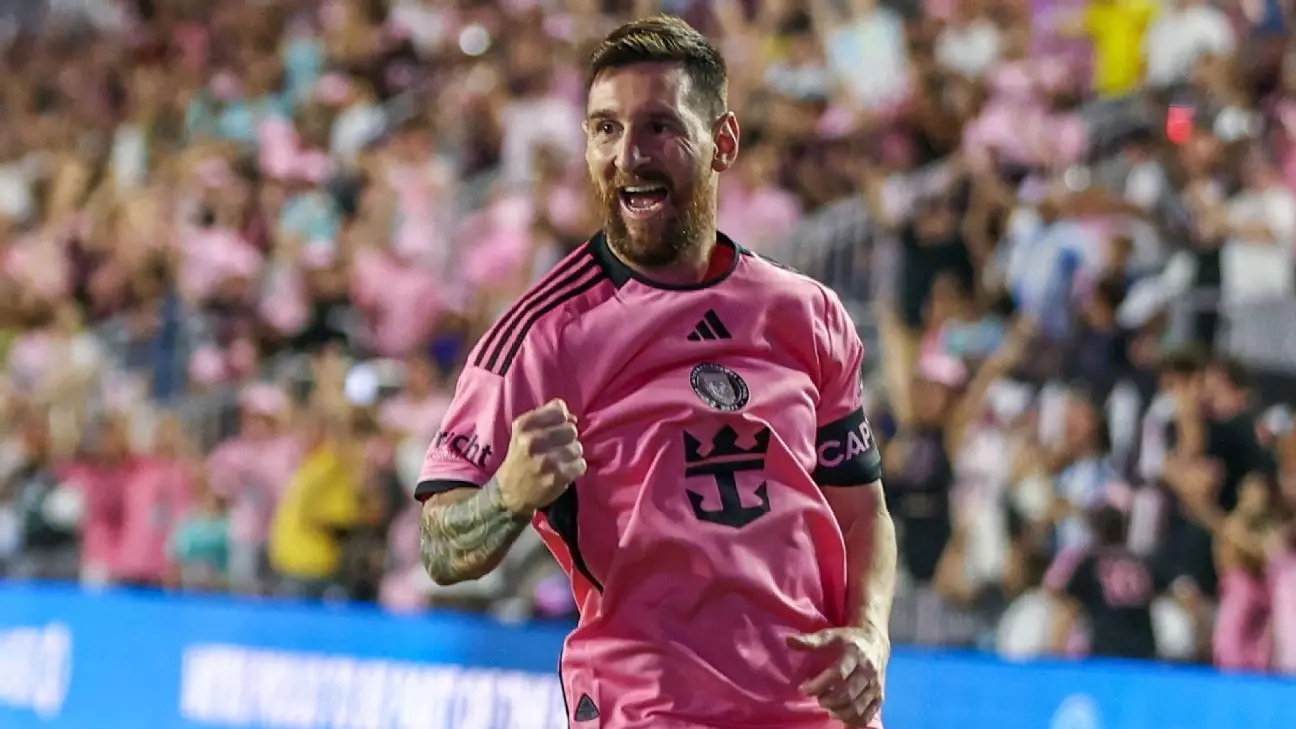The arrival of Lionel Messi at Inter Miami has triggered significant shifts within Major League Soccer (MLS), reflecting not only in the league’s competitive atmosphere but also in financial structures concerning player salaries. The recent report by the MLS Players Association (MLSPA) showcases an impressive 9.7% rise in the average salary across the league, underlining a trend that could redefine professional soccer in North America.
Messi’s contract with Inter Miami, reported to be valued at $20.4 million annually in guaranteed compensation alone, marks a new era for player wages in MLS. Beyond his salary, co-owner Jorge Mas has pointed to the potential total earnings of Messi, which could reach between $50 million to $60 million, a figure that dwarfs the payroll of 22 other teams in the league. This considerable investment in a single player reflects not only Messi’s status as a global superstar but also Inter Miami’s aspirations to elevate the team’s profile and competitiveness. With Messi’s remarkable performance – including an 11-minute hat trick against the New England Revolution – the club’s record-breaking achievement of securing the Supporters’ Shield and accumulating 74 points serves as a testament to the direct correlation between star players and team success.
Shifting Dynamics in Team Payrolls
The financial commitment to Messi has pushed Inter Miami’s total compensation to an astounding $41.7 million, significantly higher than the average spend of $18.41 million per MLS team. This imbalance highlights an intriguing scenario in which high expenditure does not always guarantee postseason success. Among the top 10 spending teams, four failed to qualify for the MLS Cup playoffs, emphasizing that strategic management, talent development, and teamwork are critical components regardless of salary size.
The shift in payment structures within MLS also extends to other players in the league. Following Messi, notable salary earners include Toronto FC’s Lorenzo Insigne and Miami’s Sergio Busquets, with substantial contracts that draw attention to the growing financial competitiveness. The increase in average guaranteed base compensation to $596,226 signals a positive trend for players, marking a significant climb from the previous year’s $543,207.
Addressing Wage Disparities
Interestingly, the salary distribution within the league’s player pool shows that the lower echelons are experiencing improvements. The median guaranteed base compensation climbed to $308,375, suggesting that MLS is making strides to address wage disparities among players. This upward trend among lower-paid players fosters a more balanced competitive environment, encouraging a broader talent spectrum to emerge across the league.
Moreover, the ongoing collective bargaining agreement (CBA), which is set to run until the end of the 2027 season, may further solidify these advancements in player compensation. With the financial backing from media deals and sponsorships becoming more lucrative, there is optimism for sustainable growth in player salaries and league competitiveness.
While the influx of high salaries attracts international stars, it also invites critical analysis. The promise of success based solely on financial investment has its pitfalls. Teams that overspend without a clear strategy may find themselves languishing at the bottom of the standings despite significant financial resources. Therefore, the challenge lies in balancing investment in talent with prudent management strategies that leverage team dynamics and cohesion.
Looking forward, other clubs in the MLS must evaluate their spending strategies, especially as they weigh the risks of financial commitment against the backdrop of performance outcomes. Lessons can be learned from the experiences of high-investment teams that did not yield the desired results during the playoffs.
Lionel Messi’s impact on MLS transcends mere statistics; he embodies a transformative force transforming the league’s financial landscape and player dynamics. While Inter Miami reaps the benefits of star power, the broader implications of rising salaries challenge other teams to innovate and maximize their resources effectively. As MLS enters this new chapter marked by enhanced competition and financial complexity, the decisions made by teams will determine the trajectory of the league in the years to come, paving the way for heightened excitement and increasing global prominence. As player salaries continue to rise, one can only imagine how this will shape the future of soccer in North America.

